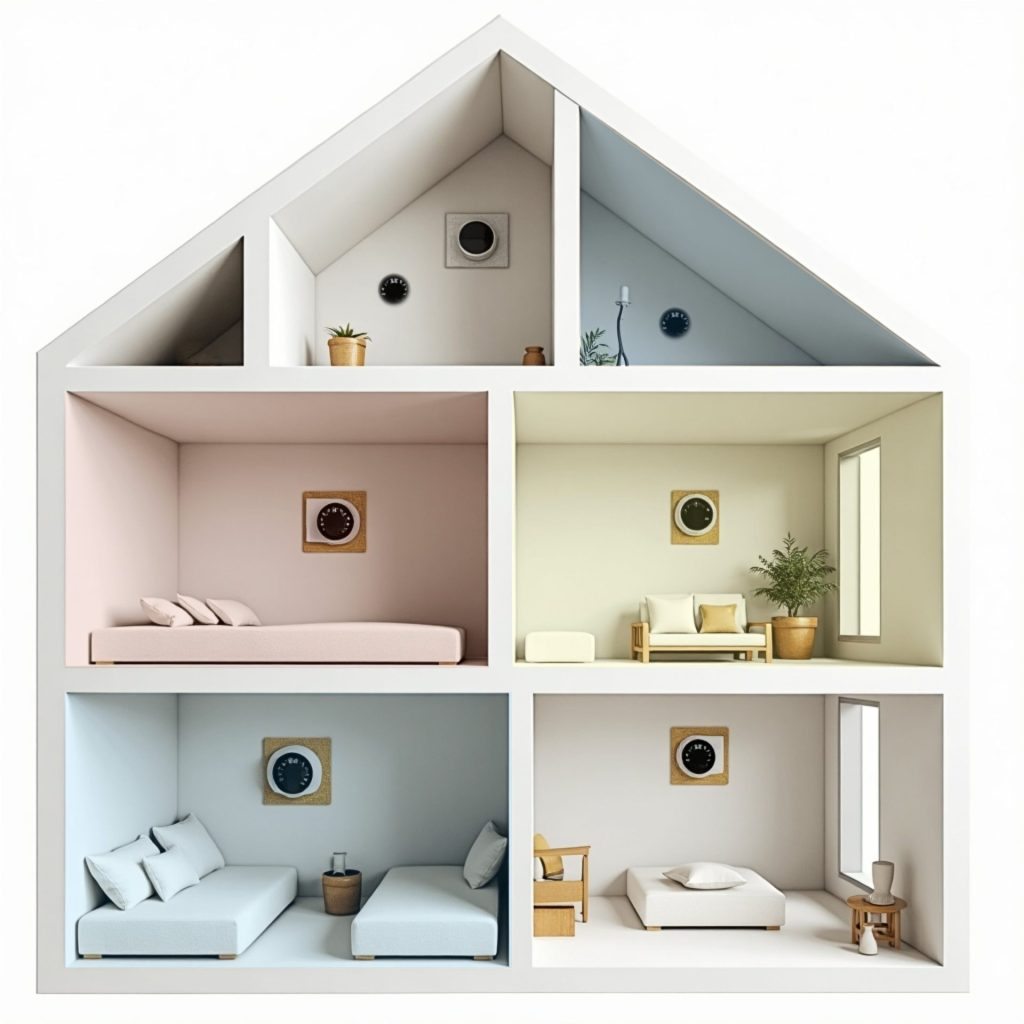Do some rooms in your home always feel too hot or too cold, no matter how you adjust the thermostat? An HVAC zoning system may be the solution.
HVAC Zoning Systems Explained
Traditional HVAC systems heat or cool the entire house, leading to wasted energy and uneven temperatures. An HVAC zoning system addresses this by dividing the home into areas with individual thermostats. This approach enhances comfort and ultimately reduces energy costs.
Benefits of HVAC Zoning Systems
Implementing HVAC zoning systems offers numerous advantages that enhance both the efficiency and comfort of your home or office environment. By providing benefits such as improved comfort, longer HVAC lifespan, lower utility bills, and better indoor air quality, these systems can significantly improve overall living or working conditions.
- Improved Comfort: Zoned heating and cooling allow each room to maintain its ideal temperature, eliminating compromises on thermostat settings and hot or cold spots.
- Longer HVAC Lifespan: A multi-zone HVAC system requires less effort to maintain comfort, resulting in reduced wear and tear, extended lifespan, and lower chances of expensive repairs and replacements.
- Lower Utility Bills: HVAC zoning systems reduce energy use by controlling temperature in specific house areas, leading to lower heating and cooling costs for homeowners. You can maximize your savings by taking advantage of tax incentives available for installing energy-efficient HVAC systems.
- Better Indoor Air Quality: Traditional systems circulate air throughout the home, spreading dust and allergens. Zoning systems limit airflow to specific areas, reducing allergen distribution and improving air quality.
How Do HVAC Zoning Systems Work?
Each zone has a thermostat for independent temperature control, communicating with the central HVAC system for adjustments. Dampers in the ductwork regulate airflow.
The system adjusts the dampers when a thermostat requests heating or cooling in a zone. The control panel serves as the hub, receiving signals from thermostats and adjusting dampers to deliver the right amount of conditioned air to each zone.
HVAC Zoning Systems for Energy Efficiency
Reduced Energy Consumption. A multi-zone HVAC system reduces energy use by heating or cooling only occupied areas. Homeowners can program thermostats to align with their schedules, minimizing unnecessary operation.
Optimized System Performance. Zoning enhances HVAC efficiency by preventing overwork, leading to consistent performance, reduced strain, and lower maintenance costs.
Smart Thermostat Integration. Many HVAC zoning systems integrate with smart thermostats that learn usage patterns and optimize for energy efficiency, reducing waste.
Understanding HVAC Zoning System Installation
Installing an HVAC zoning system involves careful planning and professional expertise.
1. Assessing Your Space
A professional HVAC technician evaluates your home's size, insulation, and airflow patterns to determine the best zoning configuration.
2. Installing Dampers
Motorized dampers are placed inside the ductwork to regulate airflow. These dampers open and close based on thermostat settings.
3. Wiring Thermostats and Control Panel
Each zone has a thermostat that connects to the control panel, which manages communication between the thermostats and dampers.
4. Calibrating and Testing Your System
After installation, technicians calibrate the system and check that dampers and thermostats in each state work properly.
Is an HVAC Zoning System Right for You?
HVAC zoning systems provide an energy-efficient way to make your space more comfortable and lower utility costs. If you're thinking about upgrading your HVAC, consider a multi-zone system. Contact Clements Plumbing Heating & Air today to schedule a consultation.
